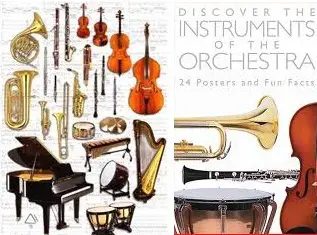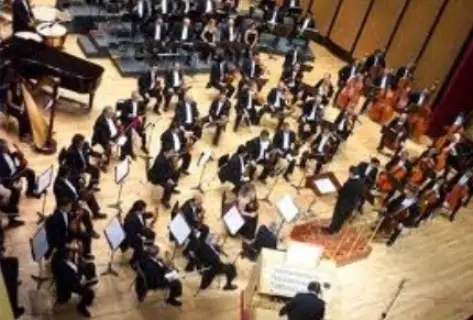
Musical instruments in an Orchestra. Watching an orchestra perform is an amazing experience. The sound is just glorious and its just amazing to see the whole orchestra move together as a unit. Here’s a list of the musical instruments that you will see in most symphony orchestras (some of these are used in school bands as well).

An orchestra is a large group of musicians who play together on various musical instruments. Several musicians play different instruments together and play in a a variety of music style. The symphony orchestra however focuses only on classical music, and as far as the number of instruments are concerned there is no fixed number as to how many instruments any particular orchestra should have.
The Various Categories of Instruments
The orchestra is divided into various groups or ‘sections’. Each section of the orchestra is set up according to the type of instruments in it.
Usually these instruments include strings, woodwinds, brass instruments, and percussion instruments. Then there is the ‘conductor’ who leads this group of musicians playing together.
The following categories of instruments are found in most orchestra. Each of these categories in turn will have several instruments, but of a similar type.
The most common categories present are:
An orchestra may feature additional instruments such as Saxophones, Pianos, church organs, harp, and so on.
The number of instruments in any symphony orchestra depends on how big the symphony is (small, medium or large orchestra). However, the number averages between 40 and 90 musical instruments.
Also Read: Reviews of the best-selling Band/Orchestra musical instruments
The Various Categories of Instruments
Here are few more examples of the musical instruments that are present within each of those categories of music instruments.
Strings
Violins, Viola, Cello, Bass, Double-bass
Woodwinds
Flute, Oboes, Bassoons & contrabassoon, Piccolos, Clarinets
Brass
Trumpets, Trombones, French Horns, Tubas, Saxophones
Percussion
Cymbals, Gongs, Xylophones, Tubular bells, Timpani, Marimba, Cymbals, Triangle and other percussion instruments
Keyboards
Celesta, Piano, and even Organ in some cases.
Role of a Music Conductor
A music conductor interprets the music and, through rehearsals, trains the orchestra to play the music piece in accordance with that interpretation. He/she also works on the basics, trying to achieve a technically perfect ensemble. Generally, when a music conductor is on the stage leading a performance, most of his/her work is actually already done before the performance starts. The music conductor is merely enforcing the laws laid down during the rehearsals.
Musicians in many orchestras are usually paid “per service”. However, the working conditions, salary and benefits offered by the various orchestras may differ on various factors, such as the location and so on. While most full-time orchestra musicians are either extremely happy with their work, there are some who are also unhappy with what they’re doing. So each person will view a career in a professional orchestra through a slightly different lens.
To Conclude
Unless you are listening to an instrumental, any music will usually contain a whole lot of instruments, including vocals. That is why it helps to know about the various instruments, their peculiar sound, and how they’re used in any orchestra.
As music students, it helps to know what are the various musical instruments used in an Orchestra.
Buy Band & Orchestra Instruments
KeytarHQ editorial team includes musicians who write and review products for pianists, keyboardists, guitarists & other musicians. KeytarHQ is the best online resource for information on keyboards, pianos, synths, keytars, guitars and music gear for musicians of all abilities, ages and interests.




Leave a Reply